Index
- EVGA GTX 780 Superclocked ACX reviewed
- The Packaging
- A closer look at ACX cooler
- A closer look at GTX 780 SC ACX
- Testbed
- Crysis 3
- Far Cry 3
- Hitman Absolution
- Metro 2033
- Sleeping Dogs
- Dirt Showdown
- Aliens vs Predator
- SniperEliteV2
- 3DMark 11
- 3DMark
- Unigine Valley
- Unigine Heaven
- Thermals, Noise, Consumption
- Overclocking
- Conclusion
- All Pages


Review: ACX pushes it over the top
Nvidia has rolled out the first desktop GTX 700 series card and as you all know by now we are talking about the GTX 780. As usual, Nvidia kicked off the series with a flagship model, although this time there is a slight twist. The GTX Titan is still the fastest NV single GPU card, but officially it is not part of the GTX 700 series, or the GTX 600 series for that matter. The new GTX 780 is basically a watered down Titan.
Both cards are based on the GK110 chip, so the “new” generation doesn’t really bring a lot of new stuff to the tablet. The GTX 780 has 12 active SMX blocks out of a total of 15 SMX blocks in the GK110. It has 2304 CUDA cores and even the Titan isn’t the full GK110, as it has 14 active SMX blocks. It is possible that Nvidia still has an ace to pull out of its sleeve and come up with something even faster over the next few months, although we wouldn’t bet on it. Specification wise the GTX 780 ended up with 50% more CUDA cores than its predecessor.
Nvidia also plans to roll out the GTX 770 over the next few days. Next month we’re expecting the GTX 760 Ti, and as far as the GTX 770 goes it looks like a faster revamp of the GTX 680.
The EVGA GTX 780 Superclocked works at a 967MHz base clock, while the reference GPU base clock is set at 863MHz. Nvidia's GPU Boost 2.0 takes the GPU clock up to 900MHz for the reference GPU and up to 1020MHz for the Superclocked card.
The GTX 780 ships with 3GB of GDDR5 memory, while the GTX Titan has 6GB and the GTX 680 comes with 2GB of GDDR5. The memory speed on all three cards is 6008MHz.
The GTX 780 and GTX Titan feature a 384-bit memory interface, while the GTX 680 is still on a 256-bit interface. The GTX 780 and Titan has 48 ROPs, while the GTX 680 has just four 64-bit connections and 32 ROPs.
The GTX 780 and Titan have a TDP of 250W, although we expect the GTX 780 to be a bit more efficient. It still needs a 6-pin and 8-pin power connector.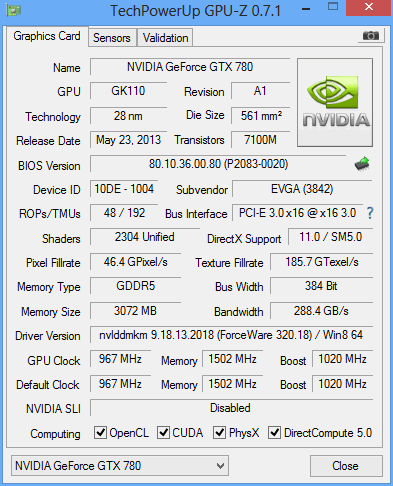
The box design is a bit strange, since we’re not used to seeing white boxes from EVGA. It seems to denote an overlocked card. In the box you’ll find:
User Guide
Quick Installation Guide
Driver DVD
A small note about PCIE 3 compatibility
A new sticker set (Enthusiast Built)
EVGA Full Size Poster
EVGA Case Badge
DVI to VGA Dongle
1x Molex to 6-pin Power Adapter
1x 6-pin to 8-pin Power Adapter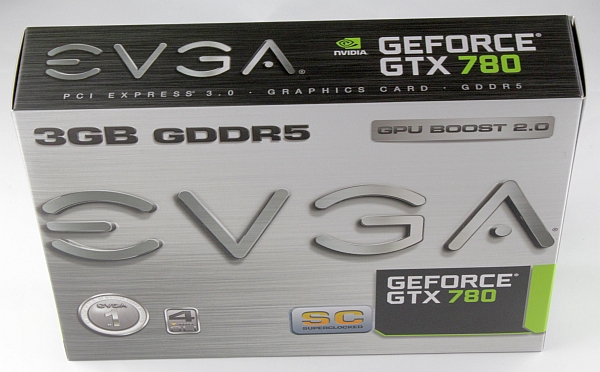
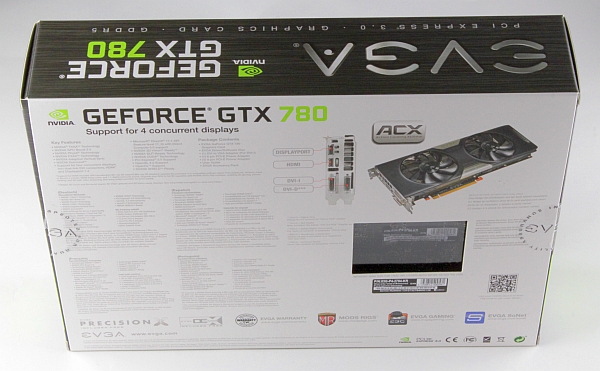
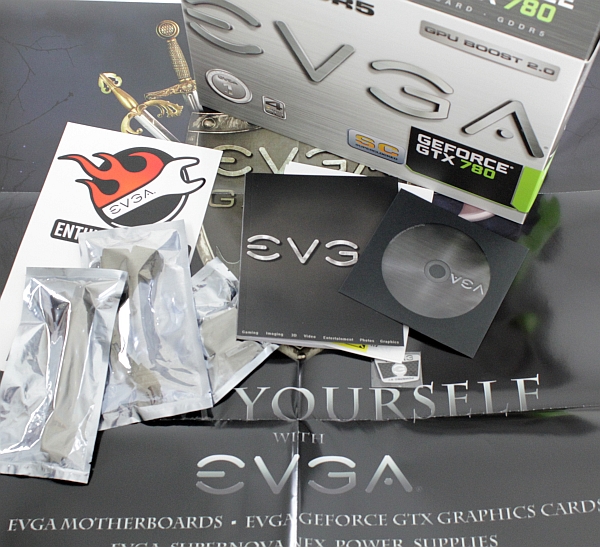
EVGA is constantly working to improve its custom components and come up with cards capable of trumping the competition. More often than not, it pulls it off. Even in its reference form, the GTX 780 is a top notch card with a good cooler, but EVGA thinks it can do an even better job. To cool the GTX 780 EVGA came up with the ACX (Active Cooling Xtreme) cooler. Before we go into detail, let’s see how it looks. It is a dual-slot, dual-fan affair and it looks pretty mean.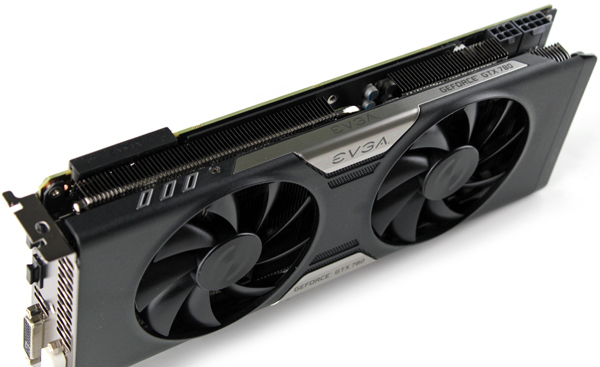
Most non-reference GTX 680 coolers were 2.5- or 3-slot designs. EVGA used the dual-slot Classified cooler, but that cooler did not fit the reference PCB. With the ACX cooler EVGA took things to the next level, as it is perfect for enthusiasts keen to use the new card in three-way or four-way SLI setups.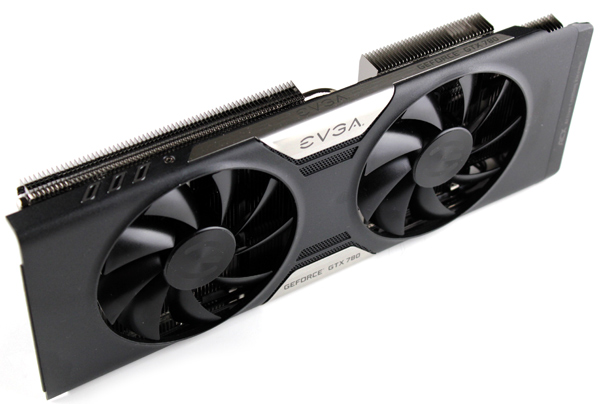
EVGA designed a special heatsink with a lot of dissipation surfaces. The heatsink was designed in such a way to minimize airflow turbulence between the fans, with some clever air barriers in the design.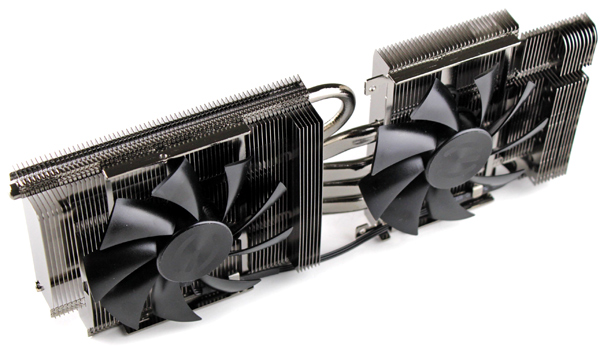
To maximize dissipation volume, EVGA used a few tricks, such as bigger fins at the sides of the cooler. Airflow channels provide better airflow and prevent pockets of hot air from creating. Of course, a bit of compressed air should be applied every once in a while to keep them clean.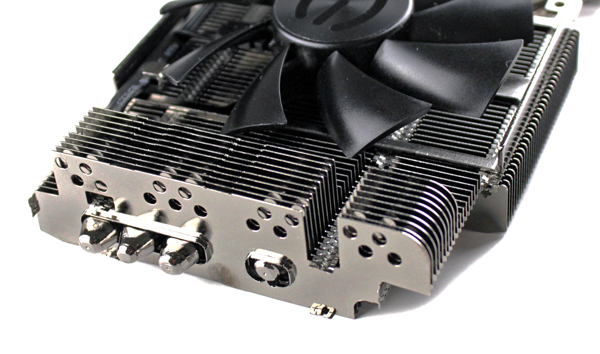
The ACX cooler comes with five elaborate heatpipes.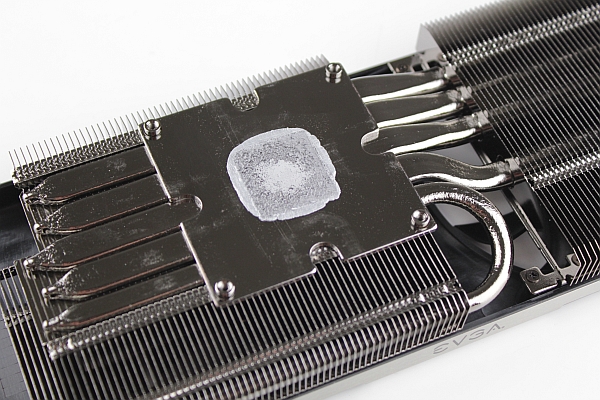
The Power Logic PLA09215B12H fan has some good features. A bad blade design generates more noise, much like poorly designed screws on nuclear subs create cavitation and help Soviet sono-buoys locate Sean Connery and his crew. However, this particular 9-blade fan seems to be up to the job.
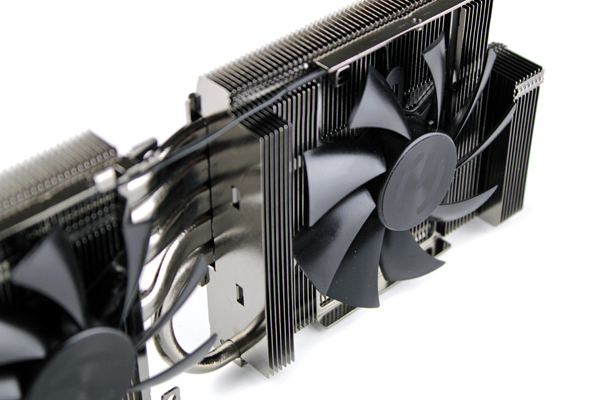
EVGA says that the blades are up to 700% more rigid than fan blades used in competing fans, which also results in a 25% weight reduction. We wanted to check it out for ourselves and sure enough the blade s feel very strong indeed.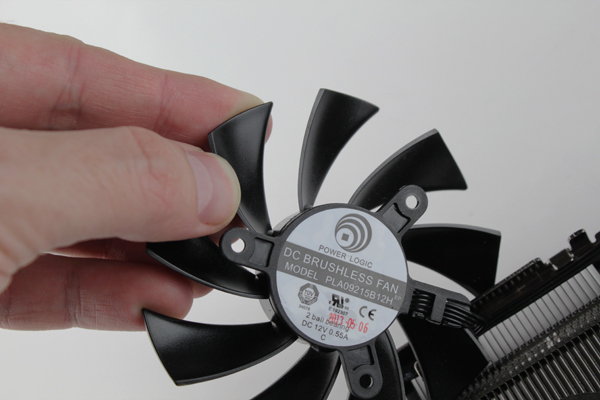
The fan uses a double ball bearing design. The noise generated by bearing designs tends to be very low, at least when they are new. However, since this fan uses two ball bearings it should last a bit longer and generate a lot less noise even after a couple of years.
This is what the bearings look like in real life, opposed to standard sleeve bearings used in most fans.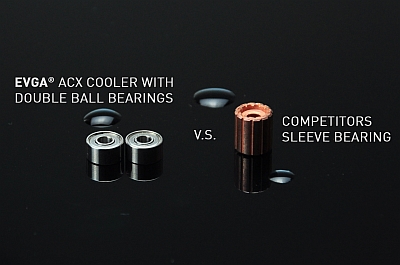
EVGA tests show that the ACX fan is about 15 percent quieter than the reference fan, but at the same time it keeps the GPU 15 percent cooler. We put the claim to the test and we are happy to report that it is spot on.
The ACX cooler is 27cm or just under 11 inches long. The PCB looks a lot like the reference GTX 780 board. EVGA decided to reinforce the baseplate to strengthen the PCB and provide a bit more cooling to the memory chips and MOSFET.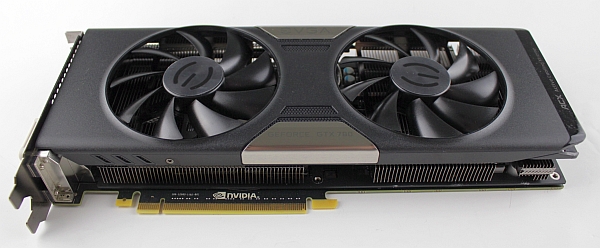
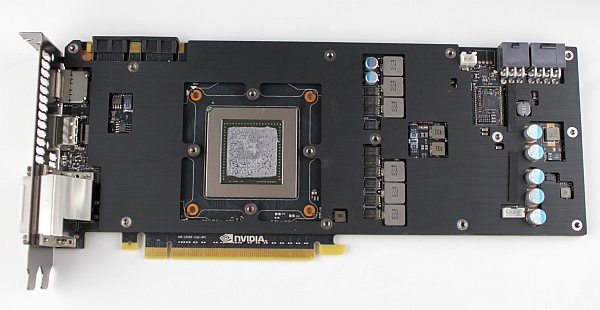
A combination of 6-pin and 8-pin power connectors is necessary to keep the show going. The card uses an OnSemi NCP4206 voltage controller.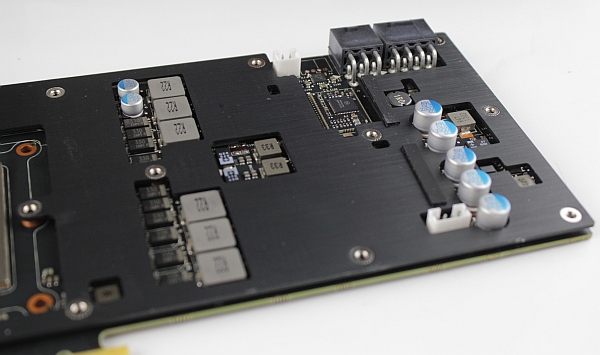
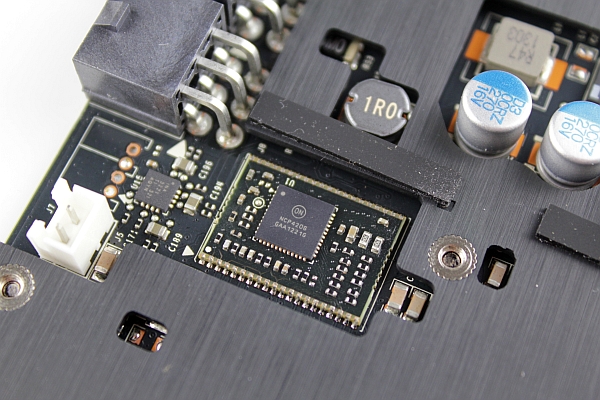
The card has 3GB of GDDR5 memory, courtesy of Samsung (model K4G20325F0-FC03 specified to run at 6000 MHz GDDR5 effective). All the memory modules at the front of the PCB are tucked away underneath the reinforcement plate. 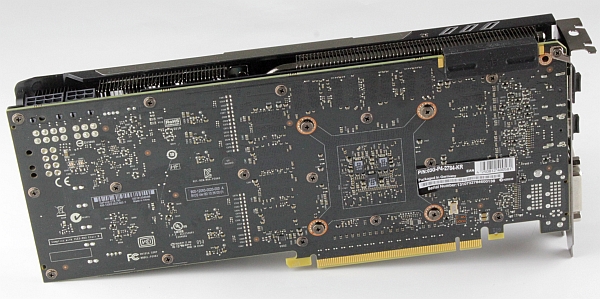
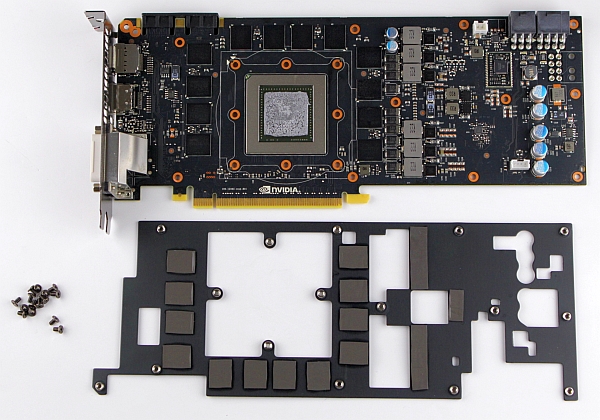
The GTX 780 Superclocked ACX features one standard HDMI connector (1.4a compatible), one standard DisplayPort out and two dual-link DVI outs.
The GTX 780 is ready for multi-GPU action, be it in standard two-card SLI, or 3-way and 4-way SLI. Therefore it features two SLI connectors.
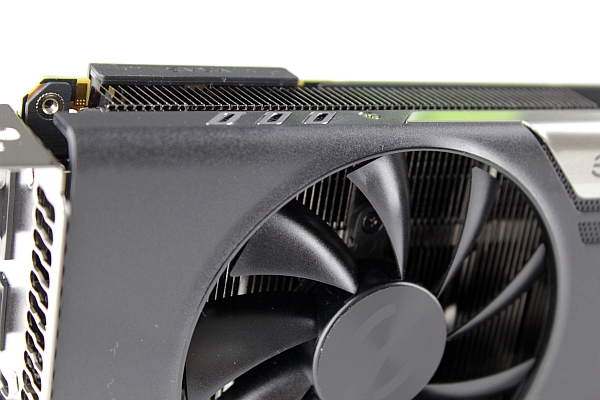
Testbed:
- Motherboard: EVGA Z77 FTW
- CPU: Ivy Bridge Core i7 3770 (4.5GHz)
- CPU Cooler: Gelid The Black Edition
- Memory: 8GB Corsair DDR3 2400MHz
- Harddisk: Corsair Neutron GTX 240GB
- Power Supply: CoolerMaster Silent Pro 1000W
- Case: CoolerMaster Cosmos II Ultra Tower
- Operating System: Win8 64-bit
Drivers:
- Nvidia 320.18-whql
- AMD 13.5_Beta2
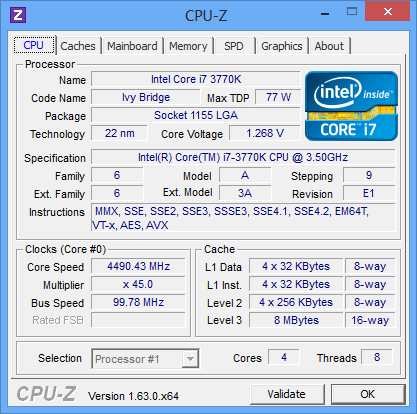
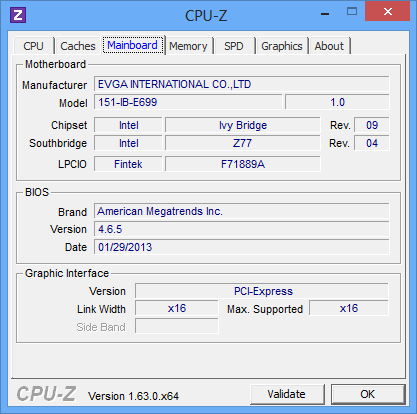
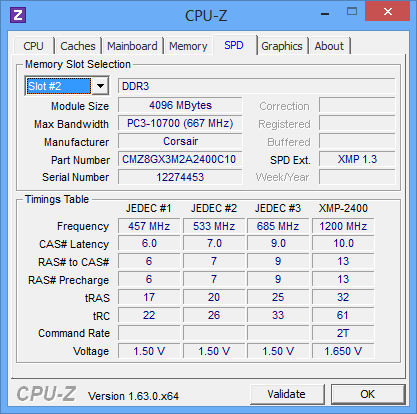
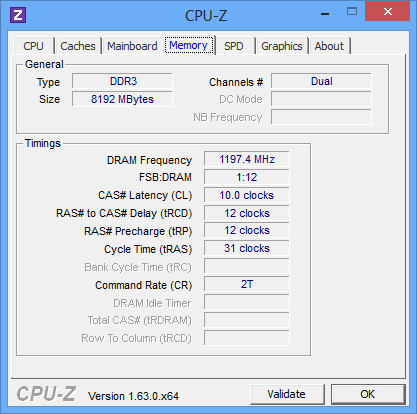
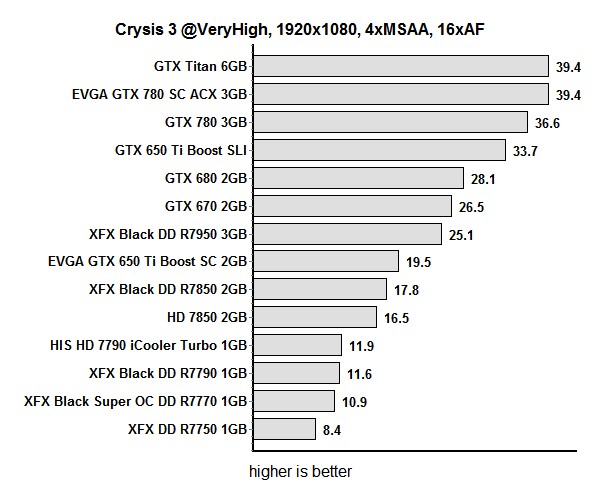
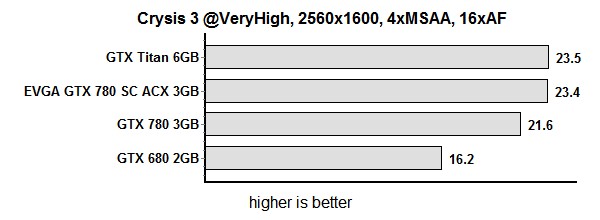
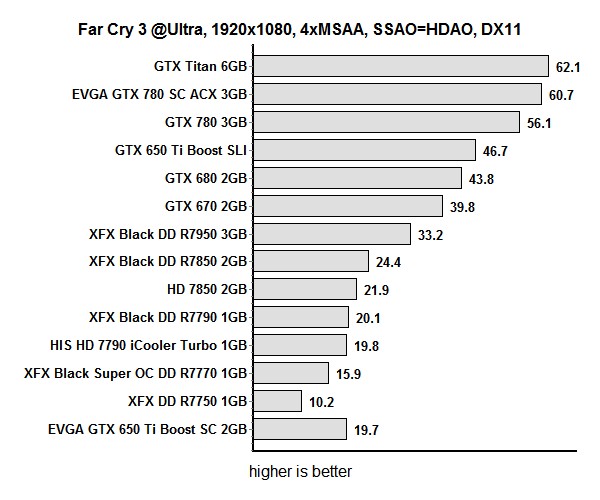
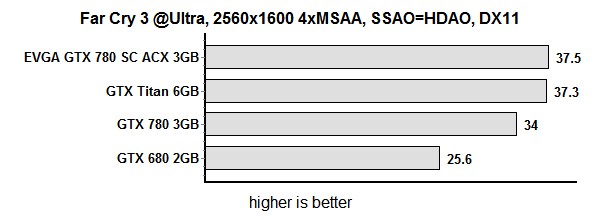
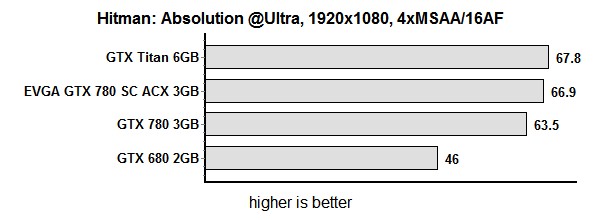
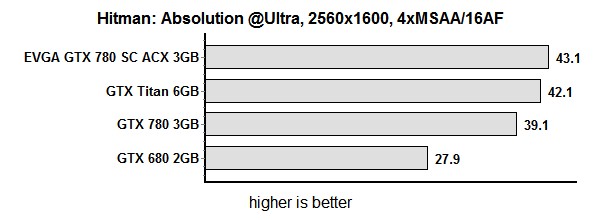
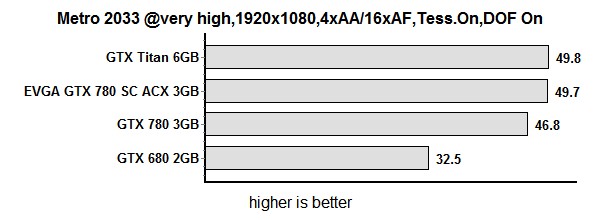
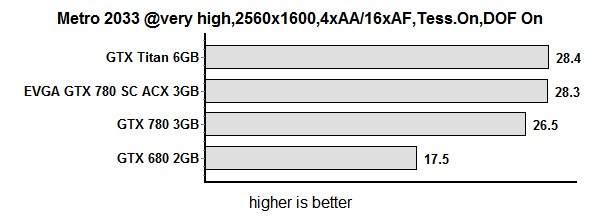
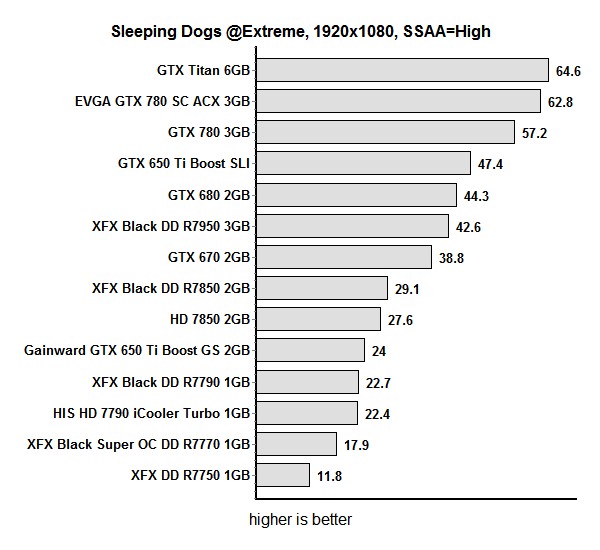
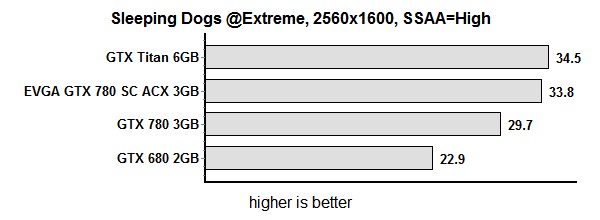
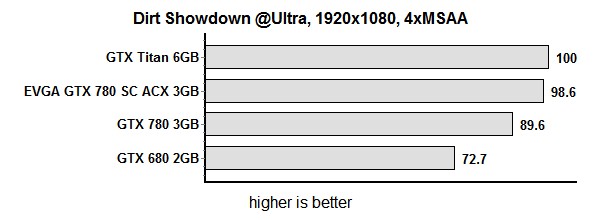
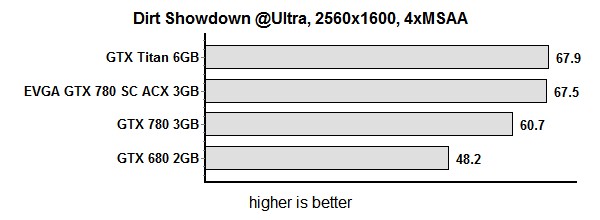
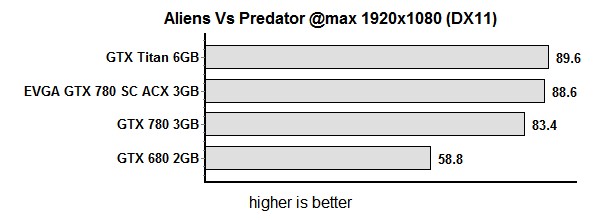
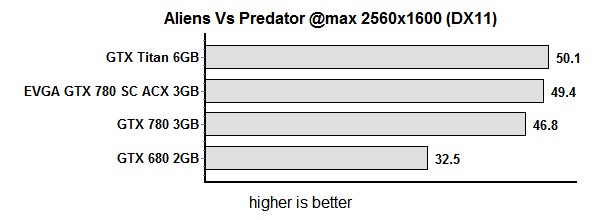
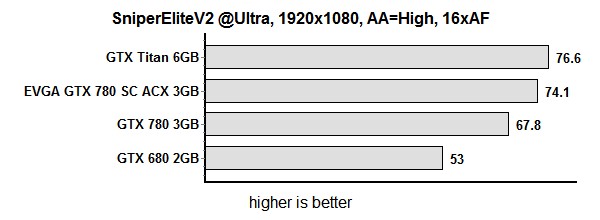
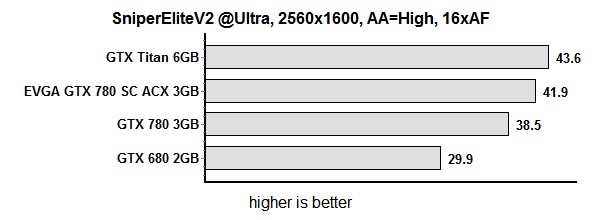
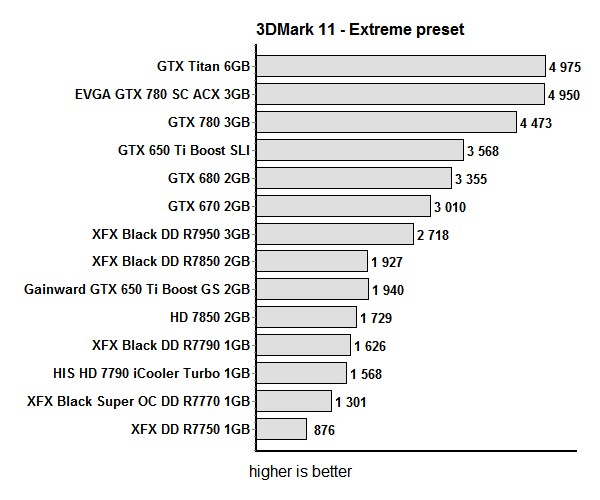
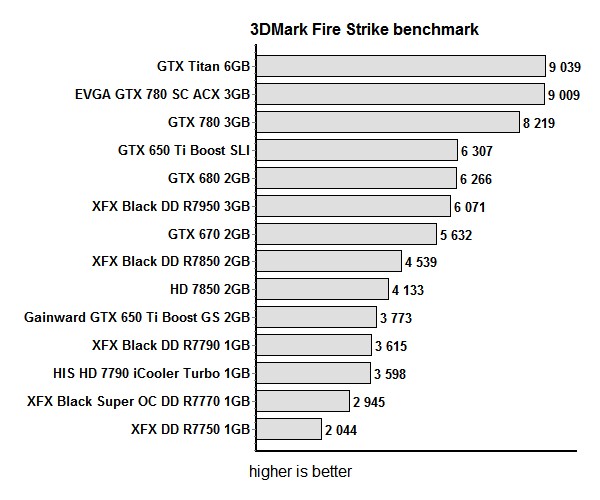
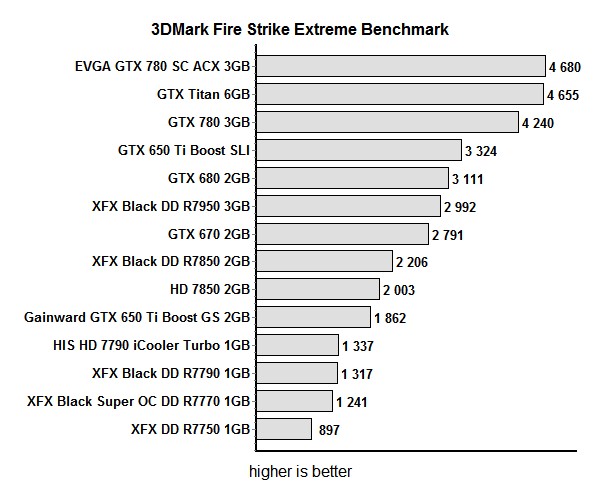
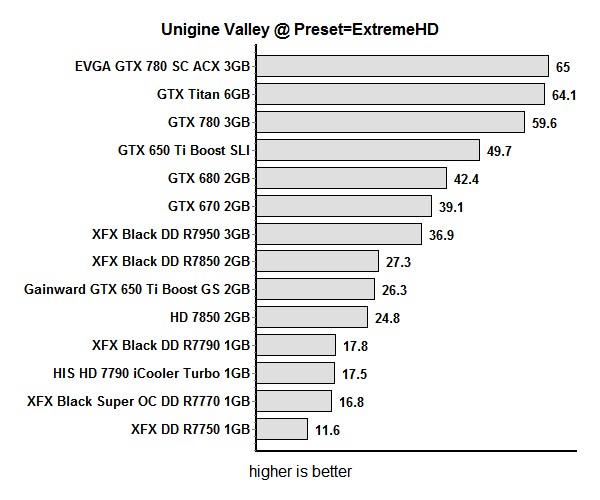
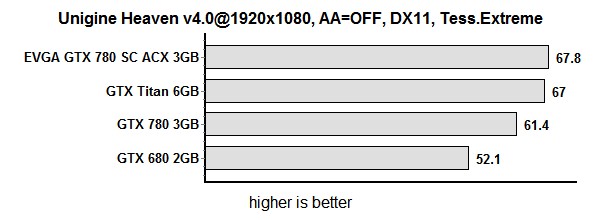
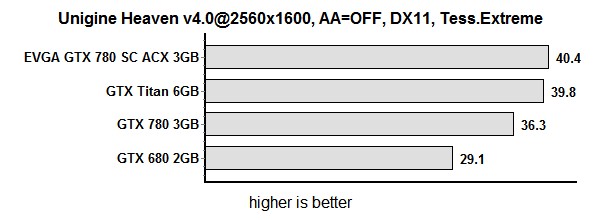
A very important feature of the GTX 780 is improved thermal control and cooling. The new Boost 2.0 algorithm will reduce the GPU clock if the temperature goes over 80 degrees.
The EVGA ACX cooler is superior to the reference design as it keeps the GPU temperatures below 69 degrees, which is 11 degrees or 15 percent better than the reference unit. This is important as the EVGA GTX 780 SC ACX is factor overclocked. If the cooler wasn’t as good, GPU Boost 2.0 would kick in and throttle the card once it gets too hot for comfort. Luckily, it doesn’t.
Coming up with a cooler that copes so well with an factory overclocked GPU couldn’t have been easy, but EVGA pulled it off. It managed to hit the sweet spot, as the cooler does a better job than the reference design, while at the same time generating same noise.
Of course, it is not inaudible under load, but it is so quiet that you can barely hear it outside the chassis, which is impressive to say the least. When it’s idle the card is completely silent.
During our Unigine Heaven test at 1080p, with extreme tessellation settings, the GPU hit 64 degrees Celsius. In the same test a reference GTX 780 hits 80 degrees. In Crysis 3, at 2560x1600 and very high details, the GTX 780 SC ACX heats up to 68 degrees, while the reference card hits 80 degrees.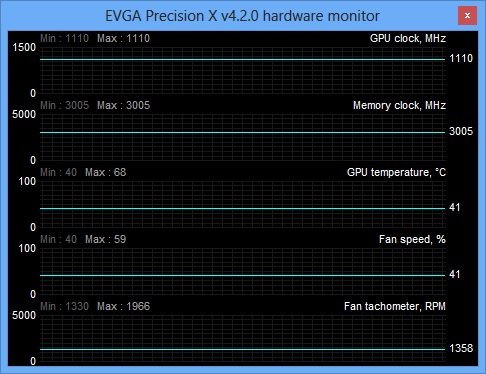
Idle GPU temperature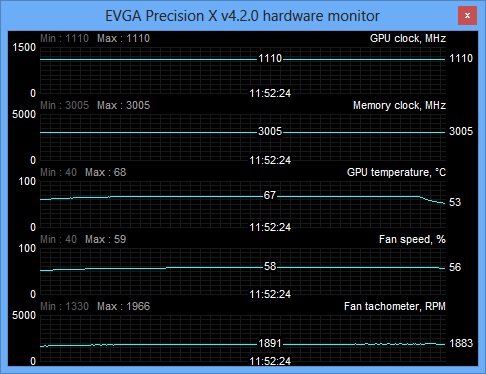
Load GPU temperature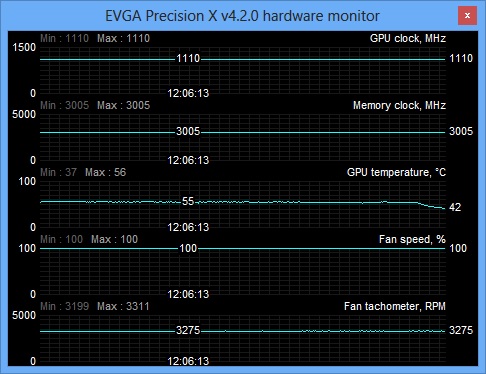
Load GPU temperature with fan at max
In terms of power efficiency, we can report that the GTX 780 SC ACX can draw a bit more juice than the reference GTX 780. This is quite normal for an factory overclocked card. Since EVGA uses a reference PCB, we can pin some of the blame for the fact that it consumes so much power on Nvidia. Overall, performance-per-watt is still good and it is on a par with the GTX 680.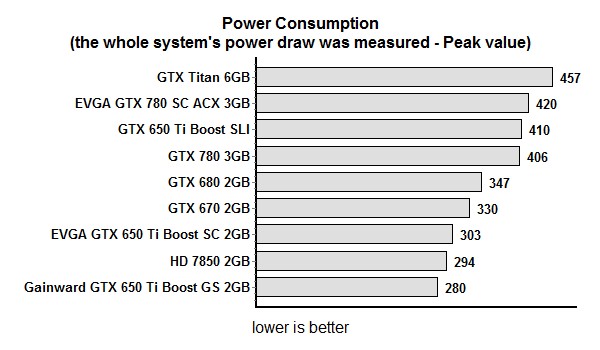
The overclocking potential is good. We managed to push the GPU 194MHz over the reference clocks and let’s not forget about factory overclocking, either. The cooler is now more important than ever, due to Boost 2.0 throttling and dynamic thermal management. Had it not been for the ACX cooler, we probably would see an 11-percent performance boost.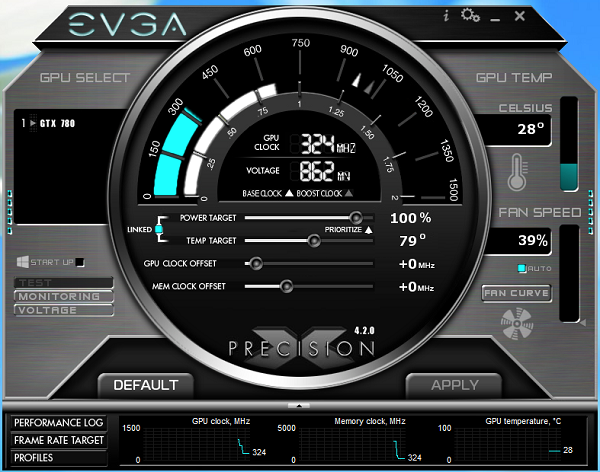
Default settings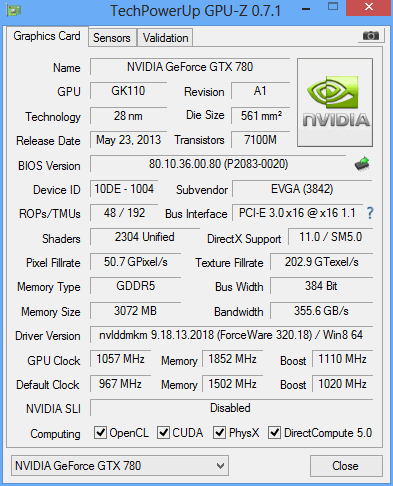
OC clock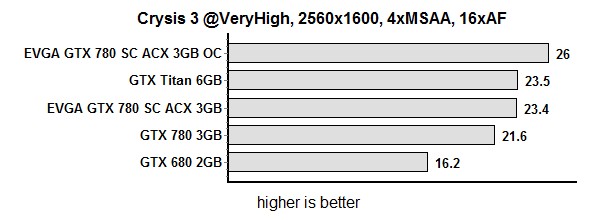
EVGA has done an excellent job. The new ACX cooler impressed us both in terms of performance and low noise. As usual, Superlocked cards ship with a big factory overclock, and the GTX 780 is no exception. It is clocked 104MHz higher than the reference card and it is up to 11 percent faster. It is about up to 50% percent faster than a reference GTX 680 in real life tests, which means it is ideal for 2560x1600 gaming.
The GTX 780 has 3GB of GDDR5, while the Titan ships with 6GB. Unless you have some very specific requirements, 3GB should be more than enough for comfortable gaming. Titan isn’t much faster in 2560x1600 tests than the GTX 780 SC and it only makes sense for extreme resolutions and multi-monitor setups.
Generally speaking even the reference GTX 780 is an excellent card, as it is up to 40% percent faster than the GTX 680. Sadly though, we can’t shake the feeling that the GTX 780 is basically the GTX 680 done right and that the old card could have been better.
In fact, the GTX 680 is about to be resurrected thanks to the GTX 770. The GTX 760 Ti is also on the way and some of the upcoming GTX 700 series cards will be nothing more than rebrands of old 600-series parts. The GTX 780 is a different beast and it is definitely worth a look.
The only big issue we have with the GTX 780, and all new high end cards for that matter, is the price. At €650 it costs more than its predecessor and this is a trend we’ve been witnessing for years. Although the PC market is in the middle of its worst slump, Nvidia is still jacking up prices like there’s no tomorrow and AMD is no better. With new consoles rolling out in a matter of weeks, it is irritating to say the least and it doesn’t bode well for the future of PC gaming.
The EVGA 780 Superclocked costs €30 more than the reference card and it is not much of a difference in this segment, all things considered. We believe the ACX cooler and overlocking potential are well worth the premium.
